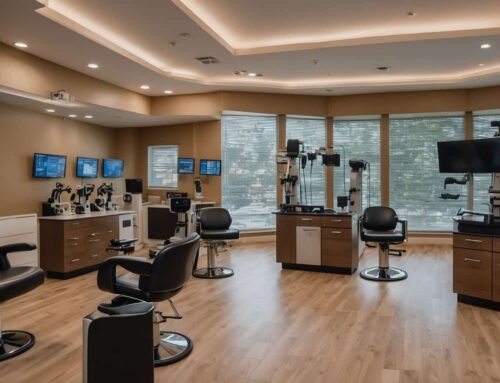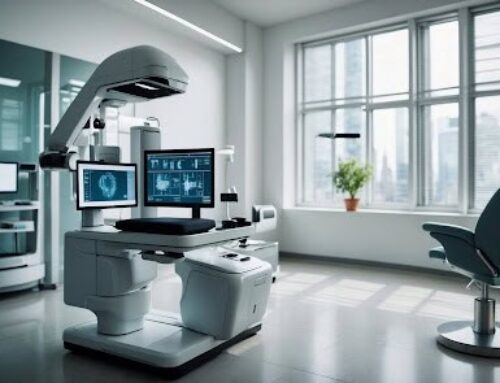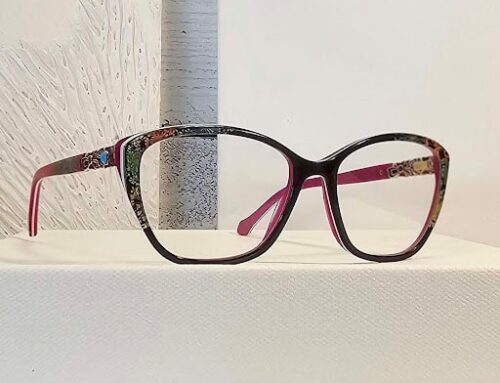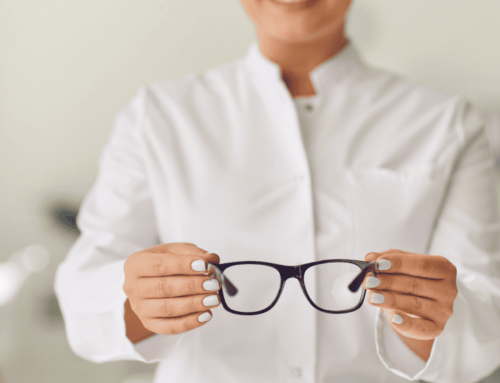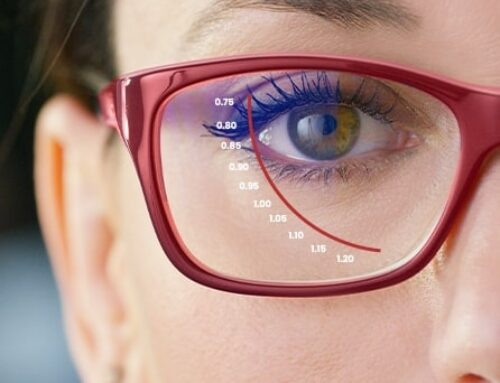Regular eye exams are more than just an optometrical formality. They are a crucial step towards maintaining not only your eye health but your overall well-being. The eyes are often referred to as the “windows to the soul”, but they might as well be called “windows to health”, providing valuable insights into numerous health conditions.
According to the Centers for Disease Control and Prevention (CDC), approximately 12 million people 40 years and over in the United States have vision impairment, including 1 million who are blind, 3 million who have vision impairment after correction, and a whopping 8 million with vision impairment due to uncorrected refractive error. These numbers underscore the importance of regular eye exams, which can identify vision issues early and help prevent further complications.
Moreover, the American Optometric Association points out that comprehensive eye examinations can also detect a variety of serious health conditions such as diabetes, high blood pressure, and even brain tumors. For instance, if your eye doctor notices small hemorrhages or yellowish spots in your eye during an exam, it could be a sign of diabetes. An unusual optic nerve color could indicate the possibility of a brain tumor.
Therefore, scheduling regular eye exams is not just about updating your eyeglasses or contact lens prescription. It’s about safeguarding your health. So, if you haven’t had an eye exam in a while, perhaps it’s time to see the world in a new light – a healthier, clearer, and brighter one.
Understanding the Basics of Vision:
How the Eye Works: The Role of the Cornea, Lens, and Retina
Our eyes are complex, highly evolved organs that enable us to perceive the world around us in vibrant color and varying degrees of brightness. To understand how the eye works, it’s essential to become familiar with its key parts: the cornea, lens, and retina.
The cornea is the eye’s outermost layer, serving as a transparent front that covers the iris, pupil, and anterior chamber. It functions like a window by controlling and focusing the entry of light into the eye.
The lens, located directly behind the pupil, further focuses the incoming light onto the retina. It adjusts its shape depending on whether the light is coming from nearby or far away, a process known as accommodation.
Finally, the retina is a thin layer of tissue located at the back of the eye. It contains millions of microscopic light-sensing nerve cells known as rods and cones, which convert light signals into electrical impulses. These impulses are then sent through the optic nerve to our brain, where they are interpreted as the images we see.
Together, the cornea, lens, and retina play vital roles in our ability to see, transforming incoming light into clear, detailed images. By keeping these components healthy through regular eye exams, we can maintain good vision and catch potential problems before they develop into serious issues.
Common Vision Problems
When the components of our visual system do not function together optimally, various vision problems can arise. Here are some common vision issues:
Myopia (Nearsightedness)
Myopia, or nearsightedness, is a condition where the eye does not bend or refract light properly, resulting in a focus point in front of the retina. This issue often arises from an eye that is too long or a cornea that is excessively curved, leading to difficulty seeing distant objects clearly while near objects remain in crisp focus.
Hyperopia (Farsightedness)
On the flip side of myopia is hyperopia, also known as farsightedness. With hyperopia, the focus point is behind the retina. This condition can occur if the eye is too short or the cornea is insufficiently curved. The result is a difficulty in focusing on near objects, while distant objects may be seen more clearly.
Astigmatism
Astigmatism is a common condition that occurs when the cornea or lens is irregularly shaped, causing light to focus unevenly on the retina. This can result in blurred or distorted vision at all distances. It often co-exists with myopia or hyperopia.
Presbyopia
Presbyopia is an age-related condition where the lens becomes less flexible, reducing the ability to focus on close objects. It’s a natural part of aging that typically becomes noticeable in the mid to late 40s.
All these conditions can be effectively diagnosed during a comprehensive eye examination. Depending on the severity and individual needs, treatments may include corrective eyewear (glasses or contact lenses), refractive surgery, or in the case of presbyopia, reading glasses or multifocal lenses. Regular eye exams ensure these conditions are detected early, allowing for timely treatment and preventing further vision complications.
The Impact of Blurry Vision on Daily Activities
Blurry vision can significantly affect an individual’s quality of life by impacting routine activities at various levels. Unclear vision may impede one’s ability to perform simple tasks such as reading, writing, or even walking. For instance, difficulty in distinguishing fine print or experiencing strain while reading can be direct consequences of uncorrected vision problems. Moreover, visual impairment may also lead to headaches and eye fatigue, further affecting daily productivity.
From a safety standpoint, blurry vision can pose severe risks, particularly in actions that require sharp visual acuity like driving or operating heavy machinery. Reduced night vision, another consequence of blurry vision, can make navigating in low-light conditions challenging, increasing the risk of accidents.
Social interactions may also be affected as individuals with blurry vision might struggle to recognize faces or interpret non-verbal cues accurately. This can lead to feelings of isolation and negatively impact mental well-being. Furthermore, children with uncorrected vision problems may face challenges in learning and development, highlighting the importance of early eye exams and intervention. It’s clear to see that blurry vision, if left unaddressed, can substantially influence various aspects of daily life, emphasizing the importance of regular eye care and vision correction.
The Benefits of an Eye Exam
Vision Clarity and Overall Health
The benefits of an eye examination extend beyond merely troubleshooting vision issues. Regular eye exams serve as a preventive measure against potential eye diseases and other health complications. They are also instrumental in tracking the overall health of your eyes, comprehensively assessing everything from visual acuity to peripheral vision, depth perception, color vision, and responsiveness to light.
Early Detection of Eye Diseases
Early diagnosis of serious eye diseases such as glaucoma, macular degeneration, or cataracts can be life-changing. Many of these conditions progress silently, showing no early warning signs. Regular eye exams ensure any abnormalities are detected and treated promptly, significantly reducing the risk of vision loss.
Detection of Systemic Diseases
Optometrists can often spot the early signs of systemic diseases like diabetes, high blood pressure, and even certain types of cancers during a routine eye exam. Changes in vision or the appearance of the eye might be the first indication of such conditions. Therefore, regular eye exams can be vital in identifying hidden health issues and initiating early treatment.
The Eye Exam Process
Preparing for an Eye Exam: What to Expect and How to Get Ready
What to expect
Eye exams can vary based on your age, vision problems, and overall health. However, they typically involve a series of tests to assess your vision and check for any eye diseases. Your eye doctor may use various instruments, shine bright lights directly at your eyes, and request that you look through several different lenses. Each test during an eye examination evaluates a different aspect of your vision or eye health.
- Preliminary Tests: The examination usually starts with simple vision tests, followed by evaluations of eye muscle movements and how your pupils respond to light.
- Visual Acuity Tests: These assess how clearly you can see. You’ll be asked to identify different letters of the alphabet printed on a chart or a screen.
- Refraction Testing: If your visual acuity tests show that you have less than perfect vision, your doctor might use a phoropter, an instrument that measures the amount of refractive error you have and determines the right prescription to correct any vision problems.
- Slit-lamp Examination: This powerful microscope allows your doctor to inspect your eyes under high magnification, revealing the front and back parts of the eye (including lids, cornea, iris, and retina) and helping to spot signs of certain health conditions or diseases.
- Glaucoma Testing: This test measures your eye pressure to assess the risk for glaucoma.
- Pupil Dilation: This involves widening your pupils with eye drops to allow a closer look at the retina and optic nerve.
How to get ready
Preparing for an eye exam is relatively straightforward but can help ensure the process runs smoothly. Here are a few steps to consider:
- Know Your Medical History: Be aware of your personal and family medical history. Your doctor will want to know if you or any family members have been diagnosed with eye diseases or conditions. Also, share information about any health problems you may have, as they can affect your vision.
- List Your Medications: Write down a list of any prescription or over-the-counter medications you’re currently taking. Don’t forget to mention any vitamins or supplements. Some medications can affect your vision or interact with prescriptions your eye doctor may use during the exam.
- Bring Your Current Eyewear: If you currently wear eyeglasses or contact lenses, bring them with you. Your doctor will want to know the prescription of your current lenses.
- Think About Your Lifestyle: Your daily activities can influence the type of correction that would be most beneficial for you. For example, if you work on a computer all day, share this with your doctor, as it affects your risk for computer vision syndrome.
- Consider Your Vision Changes: Make note of any changes you’ve noticed in your vision. If you’ve been experiencing eye fatigue, headaches, or blurred vision, make sure to inform your doctor.
- Arrange a Ride: If your pupils are dilated during the eye exam, your vision can become light-sensitive and blurry. It’s safer to arrange a ride home afterward.
Remember, an eye exam is more than just a checkup. It’s a significant step toward ensuring good eye health and maintaining your overall well-being.
Taking Charge of Your Vision Health
Just as we take steps to maintain our overall health, it’s equally important to take charge of our vision health. Regular eye exams are essential, but there’s more to eye health than just those appointments. Maintaining healthy vision involves daily practices and lifestyle choices that contribute to the well-being of our eyes.
Tips for Maintaining Healthy Vision Between Eye Exams
- Healthy Diet: Consuming a balanced diet rich in fruits, vegetables, lean protein, and healthy fats supports eye health. Nutrients like omega-3 fatty acids, lutein, zinc, and vitamins C and E might help ward off age-related vision problems such as macular degeneration and cataracts.
- Adequate Hydration: Staying well-hydrated is also beneficial for eye health. It helps keep your eyes moist, preventing dryness and irritation.
- Protective Eyewear: When performing activities that can cause eye injury, such as playing sports, gardening, or doing home repairs, use protective eyewear to shield your eyes from harm.
- UV Protection: UV radiation from the sun can harm your eyes and contribute to serious vision problems. Always wear sunglasses with 100% UVA and UVB protection when outdoors.
- Avoid Eye Strain: Prolonged use of digital devices can lead to eye strain. Follow the 20-20-20 rule – every 20 minutes, look at something 20 feet away for 20 seconds.
- No Smoking: Smoking increases the risk of developing age-related macular degeneration, cataracts, and other eye conditions. If you’re a smoker, seek help to quit.
Lifestyle Changes that Promote Good Eye Health
Adopting certain lifestyle changes can significantly contribute to good eye health. Regular physical activity enhances circulation, leading to better eye health by improving blood flow to the eyes. Maintaining a healthy weight reduces the risk of developing certain eye diseases. If you have a sedentary job, take regular breaks to rest your eyes and get in some physical movement. Limiting alcohol consumption can also help preserve your vision, as excessive drinking can lead to an increased risk of cataracts and age-related macular degeneration.
The Importance of Regular Follow-up Eye Exams
Regular follow-up eye exams are crucial to maintaining good eye health. They can help detect vision problems and eye diseases that may not have obvious symptoms. Early detection allows for prompt treatment, reducing the risk of permanent vision loss. It also enables your eye doctor to keep track of your eye health and intervene promptly if they notice any concerning changes. As a rule of thumb, adults should have a comprehensive eye exam every two years, while those over 60 or with a high risk of certain eye diseases should have their eyes checked annually. Remember, taking care of your eyes today will help ensure a clear and healthy vision for tomorrow.
In the journey of life, keeping our vision sharp and clear is essential. Having regular eye exams plays a pivotal role in maintaining our eye health and overall wellbeing. These exams offer more than just vision correction – they allow for early detection and treatment of eye diseases, help identify systemic diseases, and ensure that our eyes function at their optimum capacity.
From troubleshooting vision issues to acting as a preventive measure against potential eye problems, the benefits of an eye exam are far-reaching. They provide a comprehensive assessment of our eyes, tracking everything from visual acuity and peripheral vision to depth perception, color vision, and responsiveness to light.
Moreover, not only do eye exams focus on eye health and vision, but they can also detect signs of systemic diseases such as diabetes, high blood pressure, and some types of cancers. The early detection of such conditions can be life-altering and emphasizes the importance of regular eye exams in our lives.
Health is wealth, and the health of our eyes should not be taken lightly. Regular eye exams, along with a balanced diet, adequate hydration, and protective eyewear, can ensure that we maintain a clear vision and healthy eyes for years to come.
Therefore, let’s prioritize our vision health and be proactive in making appointments for regular eye examinations. The first step towards ensuring a bright and clear viewing experience of life begins with booking an appointment for an eye exam. It’s a small step, but one that promises significant benefits for our vision and overall health. Your eyes are your windows to the world – let’s pledge to keep them clear and healthy.




